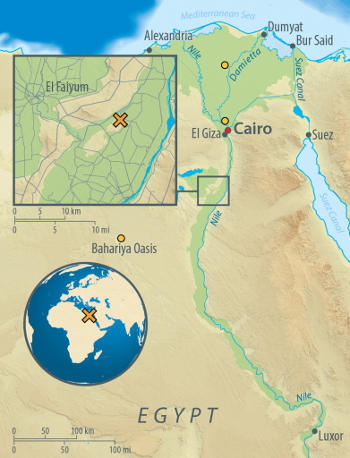Using AI to control energy for indoor agriculture
30 September 2024
Published online 31 May 2017
Deciphering the past at the genetic level reveals that ancient Egyptians are closely related to Near Easterners.

© Krause et al, Nature Communications
“Some people claim that foreign domination following conquest from Alexander the Great, the Romans or Assyrians has changed the genepool of ancient Egyptians and made them more ‘Eurasian.’ What we observe is however quite the opposite,” says Johannes Krause, biochemist at the Max Planck Institute for the Science of Human History in Jena, Germany, and author of a new study published yesterday in Nature Communications1.
The analysis of DNA samples spanning 1,300 years from the New Kingdom to the Roman Period show that ancient Egyptians shared more ancestry with Near Easterners and Anatolian and European early farmers, than modern Egyptians. The sub-Saharan genetic components seen in the present-day population have also been recently added.
From the first millennium BCE, the country harboured many foreigners — Libyans, Assyrians, Kushites, Persians, Greeks, Romans, Arabs, Turks and Brits — who contributed to its genetic pool. Historical records of these human migrations are abundant, but genetic studies of ancient mummies and skeletal material are rare.
Egypt’s hot and arid climate, plus the high humidity levels inside tombs and chemicals used in mummification, lowered the chances of the DNA’s survival.
However, this research is the first of its kind to authenticate and sequence ancient Egyptian mitochondrial genomes from Pre-Ptolemaic, Ptolemaic, and Roman mummies, using well-preserved bone, teeth and soft tissue samples that were either mummified in their original mummy state or macerated.
The researchers say they applied a rigorous selection criterion to avoid ‘contaminated’ samples. “We built genomic libraries that immortalise nearly every DNA molecule of extracted DNA,” says Wolfgang Haak, co-author and molecular anthropologist at Max Planck.
Krause and his colleagues plan on studying more mummies from earlier time periods to form a clearer picture of Egyptian genetic makeup across the ages. “Ideally we’d look at the whole package including kinship, pathogens, but also more phenotypic information,” adds Haak.
Rehab Abd Almohsen in Cairo contributed to this report.
doi:10.1038/nmiddleeast.2017.98
Stay connected: